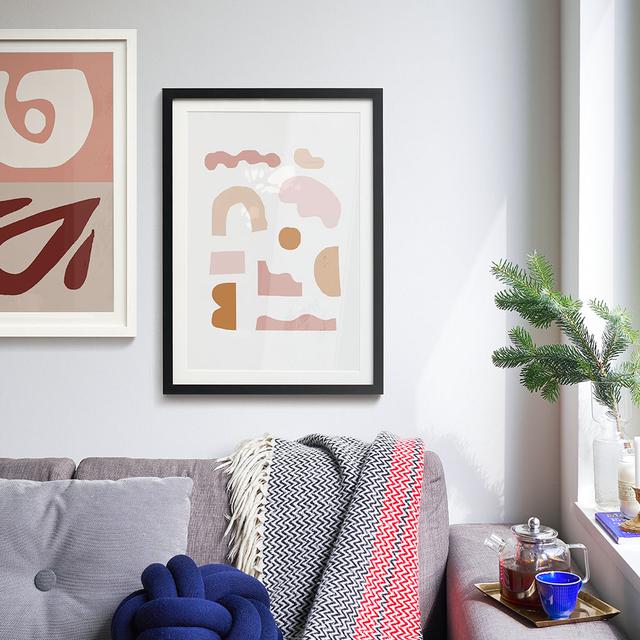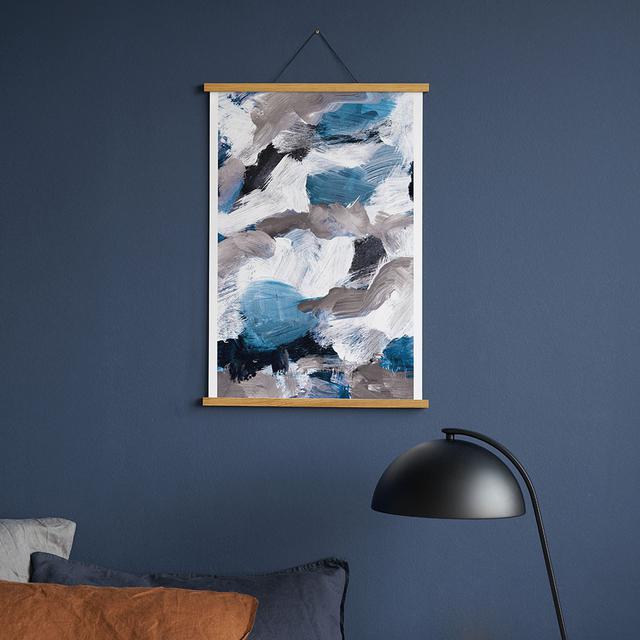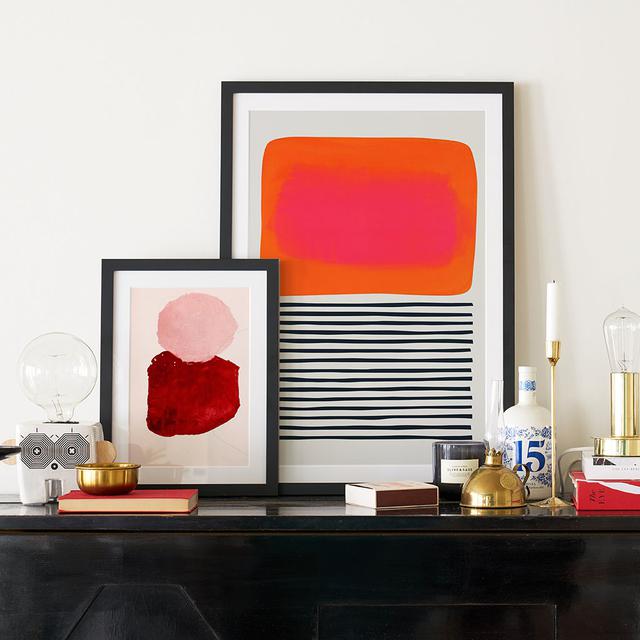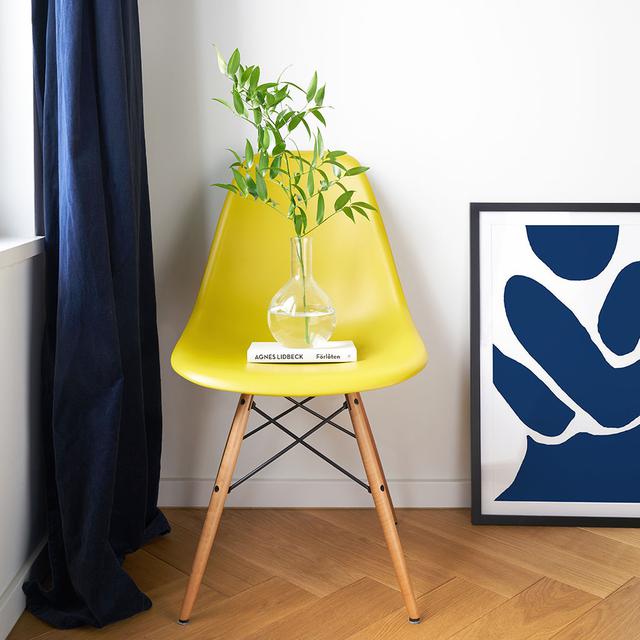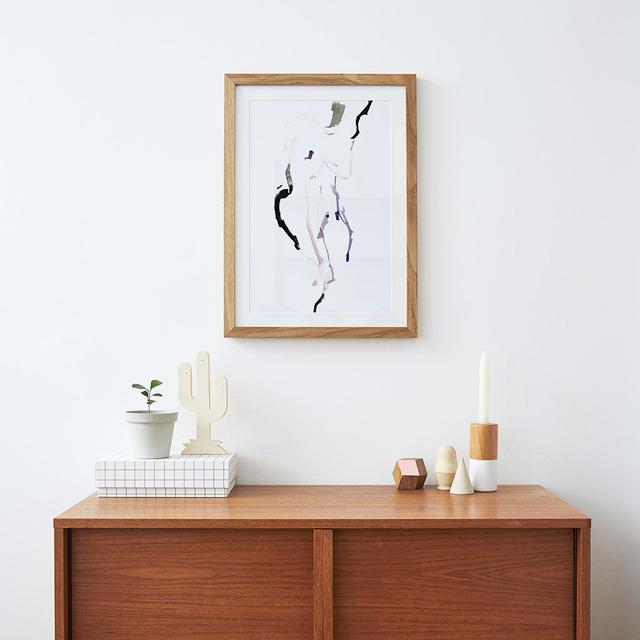What if art was the product of a real physical performance? If it was brought to life not by detailed final touches, but rather by the artist's gestures visible on the canvas? If feeling, emotion, and spontaneity were more important than convention, regulation and reason?
Welcome to the world of abstract expressionism.
Often compared to jazz, this avant-garde American movement completely revolutionized the art world in the middle of the 20th century. Read on to discover how this school of art has impacted popular contemporary interior trends and styles—and the best way to incorporate it into your décor.
From daring colour explosions to minimalist impressions, with its sheer range of manifestations and stylistic means, abstract art is anything but monotonous. However, non-figurative art is nothing new: abstract drawings can be found across numerous ancient cultures. It’s possible to admire Indigenous Australian point paintings or sand drawings without understanding their meaning; or marvel at the lines of Nazca geoglyphs, dated between 800 B.C. and 600 A.D, that only come to life when viewed from above.
Yet, abstract art was long overshadowed by the ultra-realistic paintings of the Renaissance and those of the following centuries. It was only at the beginning of the 20th century that abstract art made its comeback thanks to the emergence of several artistic movements: notably that of abstract expressionism in a post-war United States. In the context of the Cold War, abstract expressionism, which is characterized by a total freedom to experiment, is in direct opposition to Soviet socialist realism. The movement became viewed by some as a propaganda medium for a free, modern, and liberal America.
In fact, abstract expressionism represented an artistic revolution because it liberated itself from a general set of rules that had been imposed on art until then. Each work became an expression of the artist's inner life. Canvases were often placed on the floor to facilitate free physical movements, and painting techniques were varied—paint was applied with brushes, spatulas, palms, and even buckets. Jackson Pollock is known for his dripping technique, which involved pouring paint directly from the pot onto the canvas to create random patterns until the canvas was completely covered, removing any depth of field. The final artwork is the result of a synergy between the artist's gestures and the interplay between the combined colours and layers.
Today, contemporary artists such as Iris Lehnhardt are inspired by this technique. Lehnhardt’s designs "Abstract Painting IX" and "Abstract Painting VIII", with their colours overlapping in a whirlwind of blue-grey, really shine above a vintage ‘50s sideboard or mid-century modern desk. Combined with more minimalist images, her designs also succeed in creating a warm but elevated mood.
The colour field painting technique founded by Mark Rothko represents the other of the two main currents of abstract expressionism. In this instance, while the large-format canvas is also completely covered with paint, flecks and splashes give way to flat areas of geometric colour. As a result, the textures and the interaction of space and colour become the subjects of the work. Leigh Viner's "Untitled 2830" and "Untitled 1830" perfectly illustrate this technique: intense colour, combined with minimalist forms, adapts itself through its light-footed subtlety to every apartment, every room, and every picture wall. Commit to a minimalist stand-alone piece, or take a maximalist approach and integrate them alongside vintage illustrations, family photographs and poetic watercolours for a playful, eclectic look.
Abstract art does not stop at the New York School: Since the 1940s, a multitude of trends and movements influenced by Surrealism and European Cubism have emerged. Tanja Schaub's "New Silence" and "Forever Falling" are reminiscent of Fauvism and the cut-out collages of Matisse. Here, the simplified shapes and colours no longer correspond to reality. Between blue silhouettes and monochrome flowers, the artist chooses to focus on contours rather than details, offering us the freedom to interpret the image according to our imagination.
Artists such as Celeste Hollack and Julia Hariri encourage us to interpret and reconstruct their works. Hollack’s "NUDE 7", with its choice of colours and uncertain lines, represents a universal silhouette. By offering us only outlines, she invites the viewer to interpret the colours she uses and to close the gaps she leaves open. Abstract art—and with it, abstract expressionism—has many facets and manifestations. All serve to stimulate the imagination, inviting us to flee reality for a moment and see the world from new perspectives.
Are you feeling inspired? Discover more prints from our collection and create your own abstract feature wall.
Text: Caroline Lacaille
Translation: Caitlin Hughes
Header Image: Abstract Brush Strokes 6
Image 1: Horizon Radar and Rhode
Image 2: Abstract Painting VI
Image 3: Untitled 2830 and Sunset Ripples
Image 4: New Silence
Image 5: NUDE 7
